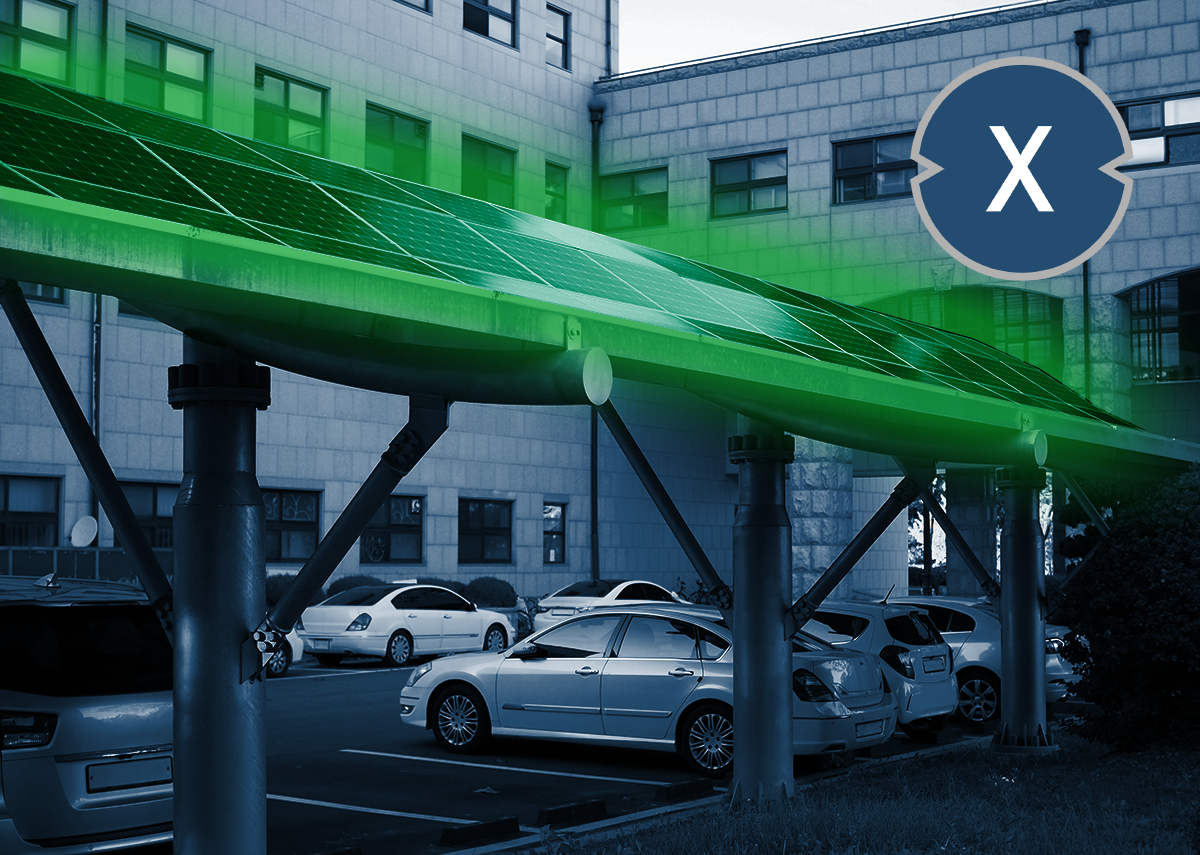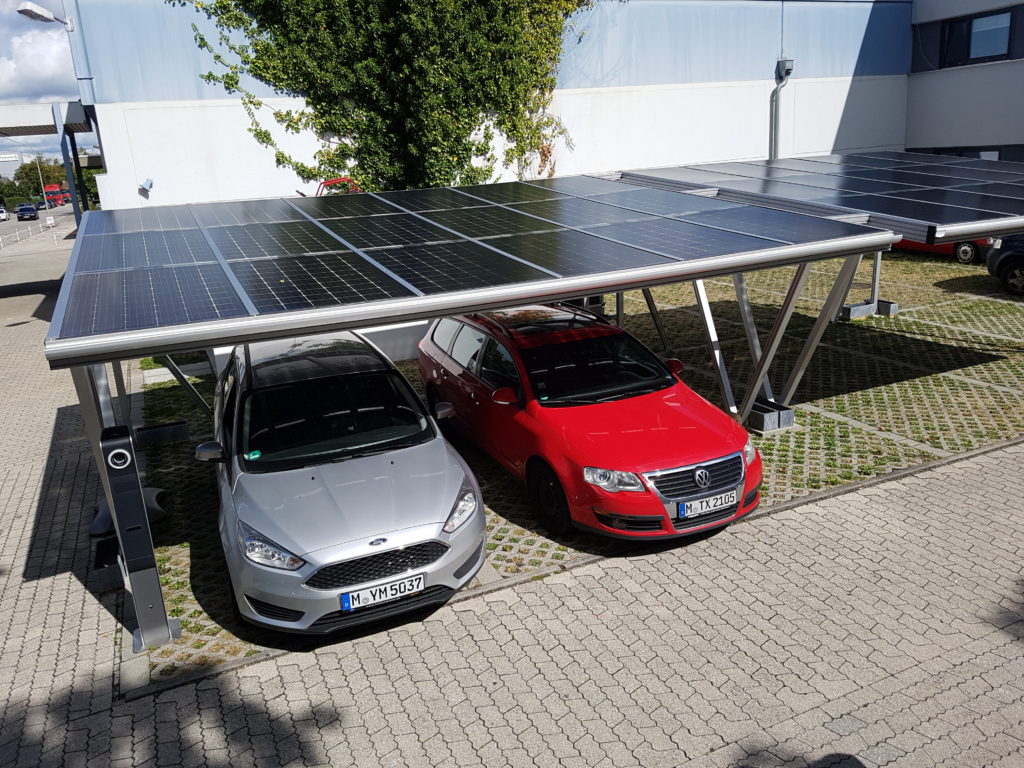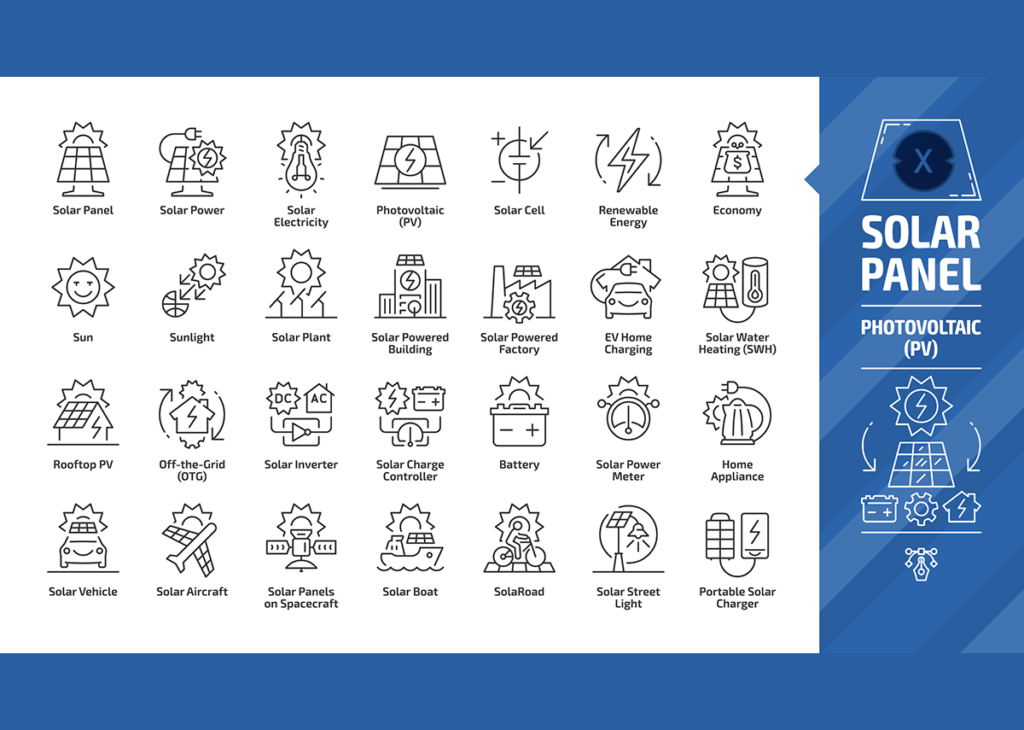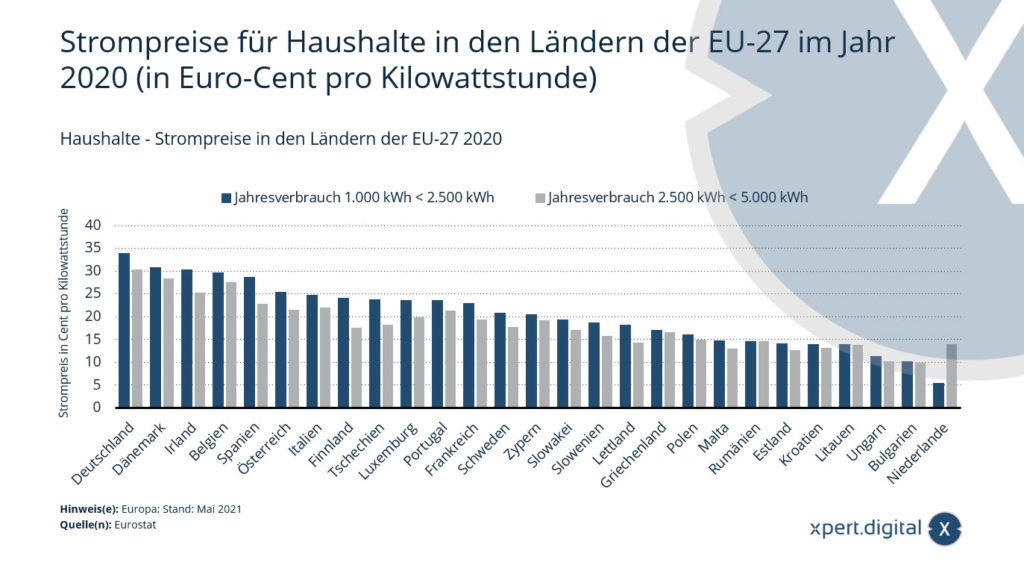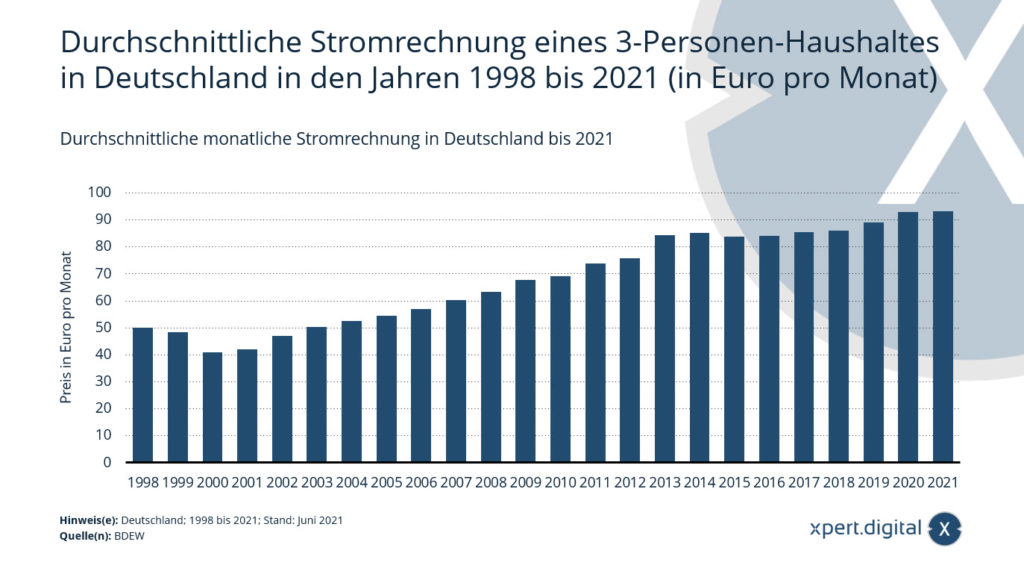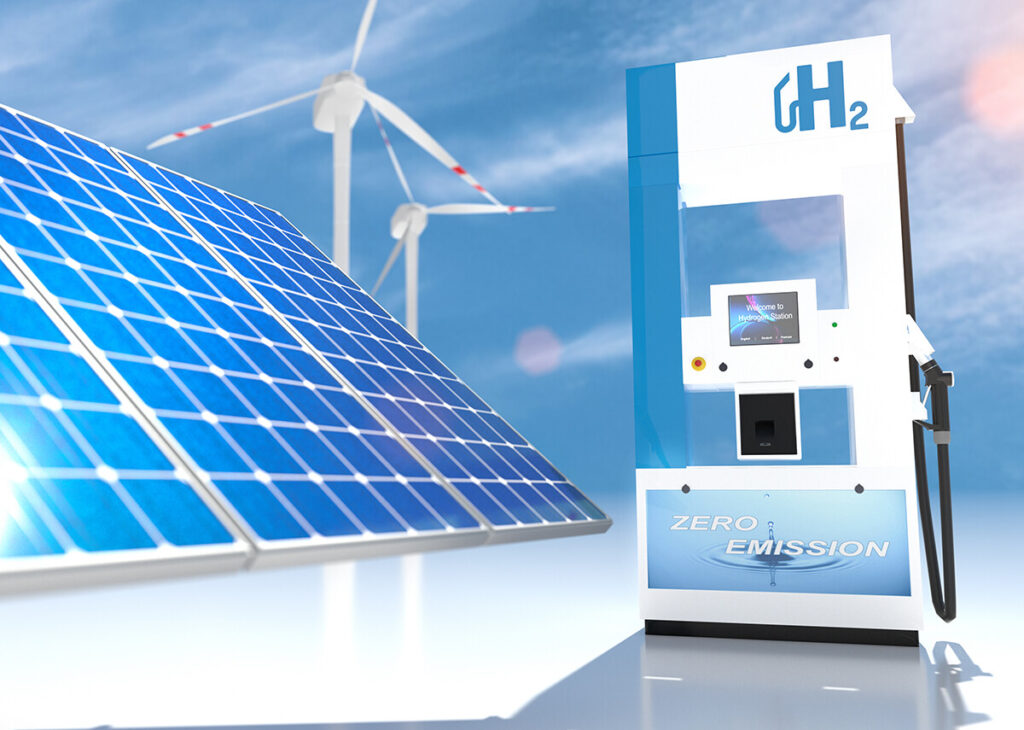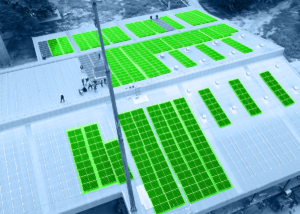Looking for a parking space roof with solar: Planning a solar carport or building a system in Velbert, Minden, Viersen or Rheine?
Language selection 📢
Published on: October 18, 2021 / update from: October 18, 2021 - Author: Konrad Wolfenstein
The future is called solar carport
Solar carports have many tasks to fulfill in the future. On the one hand, they should offer comfortable space for parking, and on the other hand, they should also protect against weather influences such as wind, rain and the sun. In the course of the CO2 reduction through EU policy and the changes in the means of transport from combustion engines to electric vehicles, the solar carports are supposed to produce the electricity generated via the solar modules.
The electricity, in turn, can be used in a variety of ways. Either through the optional provision of charging stations, for households or other uses. The use of electricity storage is also possible to avoid sun-free times such as. B. to bridge the gap at night.
Solar carports are available in different sizes and for all requirements. Single carports, double carports and from row carports to double row carports. For large covered solar parking spaces, for example, it is important that they are stable and durable. Require little maintenance and, in the worst case scenario, will not fail until completely repaired in every collision.
On the other hand, there are also other requirements for solar carports that must be designed to be representative. Be it for municipalities, hotels or for events and events. Transparent glass-glass solar modules for a solar carport are the ideal solution.
Our solar carport solutions for covering open parking areas are modular and scalable:
- Quick and easy assembly
- Individually customizable design (color, materials, surface, size, etc.)
- Installation of charging stations and inverters is possible at any time
- Scalable & modular: Available as a single, double or arbitrarily scalable row carport
- Even the standard version can be used for very high wind and snow loads
- ... and much more
📣 Open parking areas Photovoltaic solutions for industry, retail and municipalities
Everything from a single source, specially designed for solar solutions for large parking areas. You refinance or counterfinance into the future with your own electricity generation.
🎯 For solar engineers, plumbers, electricians and roofers
Advice and planning including a non-binding cost estimate. We bring you together with strong photovoltaic partners.
👨🏻 👩🏻 👴🏻 👵🏻 For private households
We are positioned across regions in German-speaking countries. We have reliable partners who advise you and implement your wishes.
With over 1,000 specialist articles, we cannot present all topics here. Therefore, you will find a small excerpt from our work here and we would be pleased if we have piqued your interest in getting to know us better:
Our solar PDF library
Large PDF library: Market monitoring and market intelligence on the subject of photovoltaics.
Data is viewed at regular intervals and checked for relevance. This usually brings together some interesting information and documentation, which we combine into a PDF presentation: our own data analyzes and marketing intelligence as well as external market observations.
More about it here:
Households - electricity prices in Germany
As of April 1, 2019, household customers in Germany paid an average of 33.8 cents per kilowatt hour of electricity in the basic supply tariff. As of 2016, the stated electricity prices correspond to an annual electricity purchase of between 2,500 and 5,000 kilowatt hours.
Electricity prices in a 3-person household
In a sample household with an electricity consumption of 3,500 kilowatt hours, three people in Germany paid an average of 91.50 euros per month for electricity (as of January 2020). The electricity price for private individuals was largely made up of the factors network fees, procurement & sales and the EEG surcharge. The latter finances the expansion of renewable energies in Germany.
Electricity prices in a country comparison
With an annual consumption of 2,500 to 5,000 kilowatt hours, Germany ranked first in the EU in terms of household electricity prices. Electricity was cheapest in Bulgarian households. Even in a global comparison, Germany was one of the countries with the highest electricity prices for households. Likewise, when looking at the index values for the development of household electricity prices, it becomes clear that electricity prices in Germany continue to rise.
Electricity prices* for household customers in Germany from 2010 to 2020 (in euro cents per kilowatt hour)
Quantity-weighted averages. Until 2015, electricity prices correspond to an annual electricity purchase of around 3,500 kilowatt hours. As of 2016, electricity prices correspond to an annual electricity purchase of between 2,500 and 5,000 kilowatt hours.
The values before 2020 were taken from the previous year's publications.
Households - electricity prices in EU countries
The statistics show the electricity prices for household customers in the EU-27 countries in 2020. The electricity price for private households in Denmark in 2020 was around 28.26 cents per kilowatt hour with an annual consumption of 2,500 to 5,000 kilowatt hours.
Electricity prices* for households in the EU-27 countries in 2020 (in euro cents per kilowatt hour)
As of: May 2021. Including all taxes. The key figures are annual averages.
Annual consumption 1,000 kWh < 2,500 kWh
- Germany – 33.87 cents
- Denmark – 30.80 cents
- Ireland – 30.22 cents
- Belgium – 29.68 cents
- Spain – 28.64 cents
- Austria – 25.39 cents
- Italy – 24.69 cents
- Finland – 24.05 cents
- Czech Republic – 23.74 cents
- Luxembourg – 23.57 cents
- Portugal – 23.53 cents
- France – 22.84 cents
- Sweden – 20.77 cents
- Cyprus – 20.42 cents
- Slovakia – 19.29 cents
- Slovenia – 18.71 cents
- Latvia – 18.14 cents
- Greece – 17.02 cents
- Poland – 16.08 cents
- Malta – 14.75 cents
- Romania – 14.60 cents
- Estonia – 14 cents
- Croatia – 13.98 cents
- Lithuania – 13.97 cents
- Hungary – 11.29 cents
- Bulgaria – 10.19 cents
- Netherlands – 5.45 cents
Annual consumption 2,500 kWh < 5,000 kWh
- Germany – 30.25 cents
- Denmark – 28.26 cents
- Ireland – 25.15 cents
- Belgium – 27.47 cents
- Spain – 22.69 cents
- Austria – 21.39 cents
- Italy – 21.90 cents
- Finland – 17.57 cents
- Czech Republic – 18.18 cents
- Luxembourg – 19.86 cents
- Portugal – 21.27 cents
- France – 19.26 cents
- Sweden – 17.72 cents
- Cyprus – 19.16 cents
- Slovakia – 17.05 cents
- Slovenia – 15.71 cents
- Latvia – 14.26 cents
- Greece – 16.58 cents
- Poland – 14.93 cents
- Malta – 12.91 cents
- Romania – 14.54 cents
- Estonia – 12.64 cents
- Croatia – 13.04 cents
- Lithuania – 13.74 cents
- Hungary – 10.20 cents
- Bulgaria – 9.90 cents
- Netherlands – 13.94 cents
Average monthly electricity bill in Germany
With an electricity consumption of 3,500 kWh, a 3-person model household in Germany paid an average of 93.17 euros per month for electricity (as of June 2021). The electricity price was largely made up of the factors network fees, procurement & sales and the EEG surcharge.
Germany has the highest electricity price in the EU
If the electricity prices of households in the EU-28 countries are compared with an annual consumption of 2,500 to 5,000 kilowatt hours, Germany was most recently in first place. Electricity was cheapest in Bulgarian households. Even in a global comparison, Germany was a country with comparatively high electricity prices for households. The fact that electricity prices in Germany continue to rise is also clear when looking at the index values for the development of household electricity prices.
Power supply in Germany
In Germany today, a large proportion of electricity is generated from renewable energies. At the same time, the amount of electricity generated using nuclear energy and hard coal is decreasing. In terms of electricity consumption, industry is the largest consumer in this country. The consumer groups “commercial, retail, services” and “households” each consume around a quarter of the total electricity.
Average electricity bill of a 3-person household in Germany from 1998 to 2021 (in euros per month)
- 1998 – 49.90 euros per month
- 1999 – 48.21 euros per month
- 2000 – 40.66 euros per month
- 2001 – 41.76 euros per month
- 2002 – 46.99 euros per month
- 2003 – 50.14 euros per month
- 2004 – 52.39 euros per month
- 2005 – 54.42 euros per month
- 2006 – 56.76 euros per month
- 2007 – 60.20 euros per month
- 2008 – 63.15 euros per month
- 2009 – 67.69 euros per month
- 2010 – 69.09 euros per month
- 2011 – 73.59 euros per month
- 2012 – 75.51 euros per month
- 2013 – 84.13 euros per month
- 2014 – 85.00 euros per month
- 2015 – 83.70 euros per month
- 2016 – 83.99 euros per month
- 2017 – 85.42 euros per month
- 2018 – 85.94 euros per month
- 2019 – 88.84 euros per month
- 2020 – 92.78 euros per month
What to do when the funding for supposedly old photovoltaic systems expires?
Anyone who put a photovoltaic system into operation in Germany before 2001 is now faced with a difficult decision: What should happen to the electricity from next year? Because then these systems will no longer be eligible for EEG funding. Those affected should carefully examine initial offers from suppliers and wait for the upcoming legal regulations, is the advice of the North Rhine-Westphalia Consumer Center.
The guaranteed EEG remuneration for electricity from photovoltaic systems expires on December 31, 2020, and the network operator no longer has to purchase the energy. A follow-up regulation, especially for small over-20 systems, has not yet been decided, but is still being negotiated in the German Bundestag. Nevertheless, a deadline runs until November 30th - by then at the latest the network operator must find out in what form electricity will continue to be fed in in 2021.
More about it here:
Is waste incineration renewable energy?
Non-renewable energy can only be used once. It is limited and not available at will. This also includes nuclear power. Nuclear power plants require enriched uranium, which must first be produced industrially. Depleted uranium is produced as a waste product. What happens to this and to the fission products caused by nuclear fission, i.e. highly toxic radioactive waste, is a different topic. On the other hand, fossil fuels cause environmental pollution and global warming by releasing greenhouse gases.
Until then, everything is logically understandable: renewable energy is freely available and does not harm the environment.
More about it here:
How did wind and solar energy develop in 2020?
According to new data from climate think tank Ember, global electricity generation from solar and wind has increased by 19 percent and 11 percent, respectively. Large countries such as China, India, Russia and the USA are recording massive increases in the production of wind and solar power. Russia is on the rise in renewable energy, with a 55 percent increase in solar energy and a staggering 236 percent increase in wind energy.
Electricity generated from wind and solar energy has doubled in the last five years, according to Ember and Bloomberg. While the global share of wind and solar energy generated annually has generally increased by less than one percent, it will increase by over 3 percent by 2020.
More about it here:
Are hydrogen and electric cars an issue in China?
The data shows how China has expanded wind and solar energy capacity over the past decade, creating the infrastructure to continue relying on cleaner energy in the future. According to Bloomberg, hydrogen energy is also much cheaper to purchase in China compared to other countries, suggesting that a boom in clean hydrogen energy is just around the corner. Still, the country leads the world in coal demand and the production of new coal-fired power plants, and it will be the most difficult to move away from this type of fossil fuel in the next few decades.
More about it here:
- Warehouses, production halls and industrial halls with their own power source from a photovoltaic roof system - Image: NavinTar|Shutterstock.com
- Industrial plant with its own power source from an outdoor photovoltaic system - Image: Peteri|Shutterstock.com
- Plan solar systems with photovoltaic solutions for freight forwarding and contract logistics
- B2B solar systems and photovoltaic solutions & advice
- Plan photovoltaics for warehouses, commercial halls and industrial halls
- Industrial plant: Plan a photovoltaic open-air system or open-space system
- Plan solar systems with photovoltaic solutions for freight forwarding and contract logistics
- B2B solar systems and photovoltaic solutions & advice
Photovoltaic system solutions: Xpert.Solar for planning and consulting in the area of solar carports, solar systems on roofs and photovoltaic systems in general for Velbert, Minden, Viersen and Rheine
I would be happy to serve as your personal advisor.
You can contact me by filling out the contact form below or simply call me on +49 89 89 674 804 .
I'm looking forward to our joint project.
Xpert.Digital – Konrad Wolfenstein
Xpert.Digital is a hub for industry with a focus on digitalization, mechanical engineering, logistics/intralogistics and photovoltaics.
With our 360° business development solution, we support well-known companies from new business to after sales.
Market intelligence, smarketing, marketing automation, content development, PR, mail campaigns, personalized social media and lead nurturing are part of our digital tools.
You can find out more at: www.xpert.digital – www.xpert.solar – www.xpert.plus



